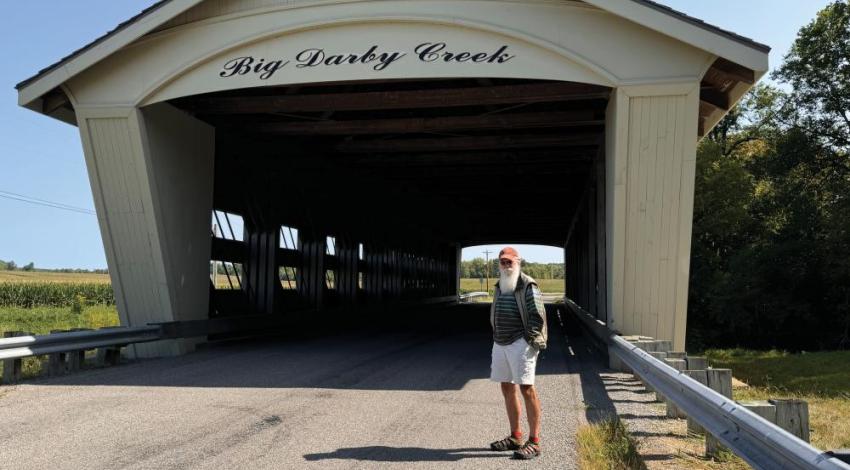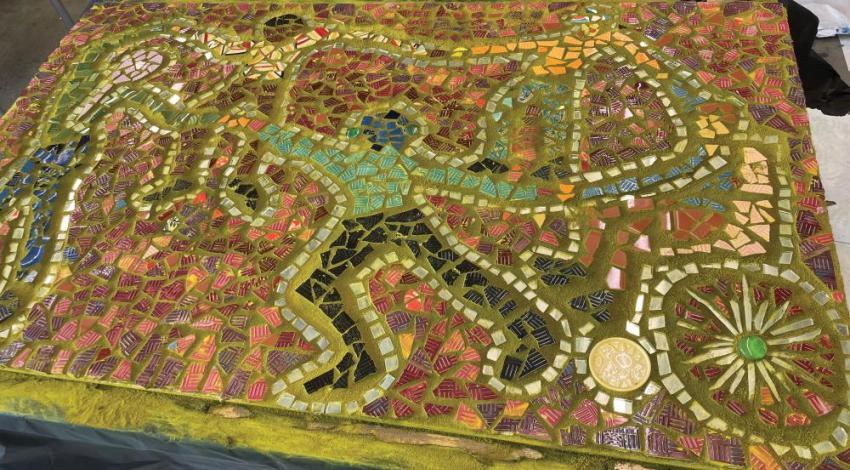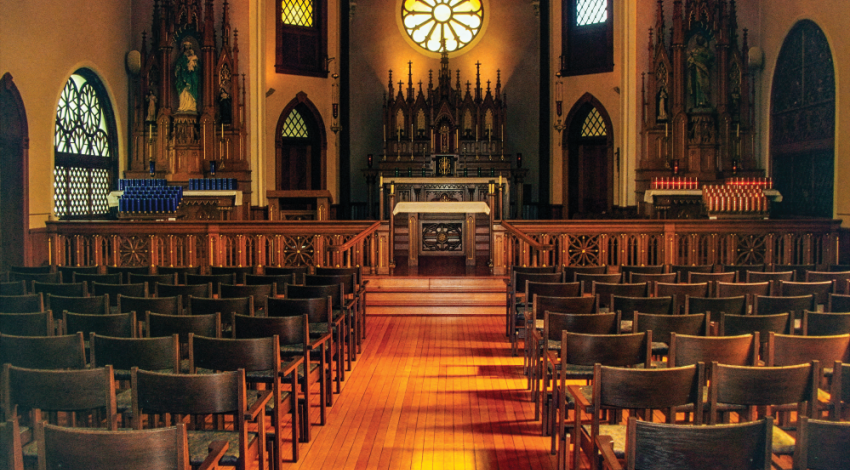In 1957, humorist James Thurber wrote to Columbus Dispatch writer and artist Bill Arter to discuss the future of the house where Thurber had been born. Thurber was famous enough in his time to have been featured on the cover of Time magazine, and he was speculating on how he would be remembered in his hometown.
“I doubt if Columbus would ever be interested in placing a marker of any kind on the Parsons  Avenue house, or acquiring it,” Thurber wrote.
Avenue house, or acquiring it,” Thurber wrote.
That glum prediction of his legacy, however, was only partially prescient: The Parsons Avenue house in which he was born in 1894 was indeed demolished to make way for Interstate 70 to come through town. But another of the homes in which he had lived, at 77 Jefferson Ave. (between Broad and Long streets east of downtown), was saved from demolition and, in 1984, became the Thurber House, a nonprofit literary arts center, museum, and gathering place for readers, writers, and artists.
Local inspiration
For more than 40 years, Thurber House has hosted talks by famous writers, welcomed visitors from around the world, and served as a literary incubator for hundreds of school-aged children. And since 1997 it has bestowed the Thurber Prize for American Humor upon the funniest of the nation’s writers — among them David Sedaris, Trevor Noah, and James McBride.
The Thurber House hosts numerous events throughout the year, including writers’ talks on the lawn.
Not a bad local legacy for a humor writer and cartoonist who frequently made his hometown and its inhabitants the butt of his jokes. In stories like “The Day the Dam Broke” and “University Days,” the good citizens of Columbus and its land grant college, Ohio State University, were often portrayed as naïve or foolish at best, bumpkins at worst. But overall, his portrayal was fond, says Leah Wharton, operations director at Thurber House.
“With Thurber, you never know when exactly he’s exaggerating, because none of his stories are completely factual,” Wharton says. “He always embellished them. But he was always very respectful of Columbus while also poking fun at it, as he did with everything.”
In a 1994 essay in The New Yorker, writer Adam Gopnik attributed Thurber’s trademark voice, that of “the little man overwhelmed by life in New York,” to Thurber’s Midwestern upbringing: “Once he saw that you could get farther in the city by acting like the Columbus boy you had been all along, his competitive instincts kicked in,” Gopnik wrote. “Nobody was going to out-little-guy him, by God.”
World famous
Thurber is not nearly as widely read these days, and even many in Ohio might not know of him but for the 2013 film The Secret Life of Walter Mitty, which was loosely based on Thurber’s most popular short story, or for journalist Keith Olbermann, an unabashed fan, reading Thurber stories during his MSNBC program, Countdown.
For most of us, it’s hard to imagine the extent of the Columbus native’s popularity during the first half of the 20th century, when he was often referred to as the greatest American humorist since Mark Twain.
After Thurber moved to New York City in 1925, he and E.B. White (author of Charlotte’s Web) are credited with giving a tone of wry wit to a fledgling literary and journalism magazine called The New Yorker. Thurber’s short stories, including “The Secret Life of Walter Mitty,” “The Night the Bed Fell,” and “The Catbird Seat,” were sometimes eclipsed, though, by the public’s love for his quirky, spare cartoons, often involving dogs.
He won a special Tony award for A Thurber Carnival, a 1960 Broadway show directed by Burgess Meredith and adapted from a collection of short stories of the same name. In 1970, nine years after he died, a comedy series based on his stories and his life, My World … and Welcome to It, won an Emmy.
Boosting the house
In recent decades, his fading fame, increasing competition for the public’s attention, and the pandemic lockdown have taken a toll, and Thurber House has struggled. Late last year the organization launched an appeal, acknowledging that “Thurber House is facing uncertainty, and we need your help.”
As of mid-April, the campaign has raised 72% of its $200,000 goal. The extra funds may keep the doors open another 40 years, Wharton says, and every donation is much appreciated. The most encouraging responses to the fundraising campaign, however, come from former students and others who love the Thurber House and have fond memories of hearing stories — or writing their own — under its roof.
“The donations are absolutely sustaining,” she says. “At the same time, the messages of support and hope are equally appreciated. They tell us that what we’re doing matters, and that we’re reaching a lot of people in ways that are influencing their lives.”
Thurber House, 77 Jefferson Ave., Columbus, OH 43215. Museum is open 1–4 p.m. Saturday and Sunday, though hours are always subject to change and a check of the website is always recommended. Click here for information on visiting or donating to the Thurber House.












